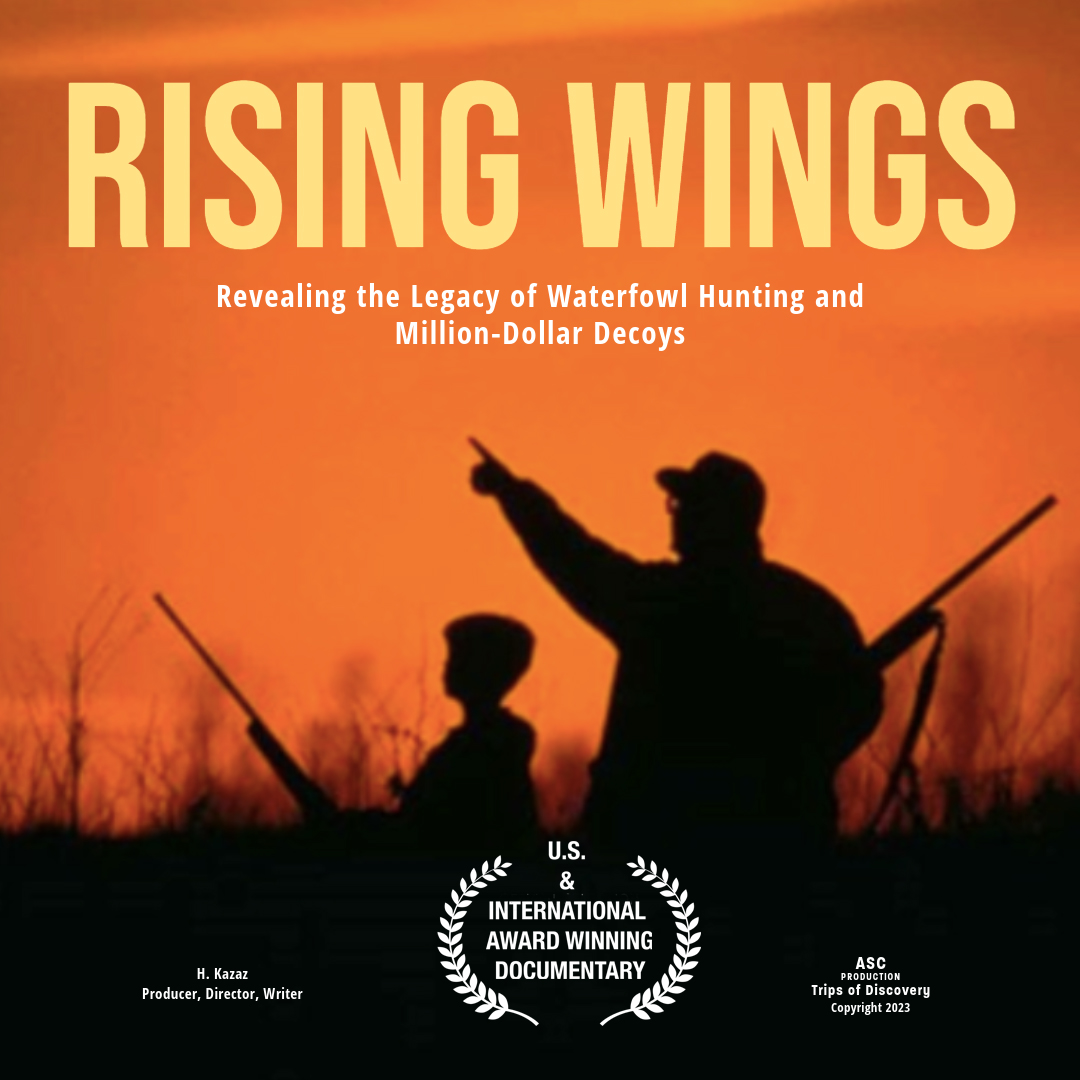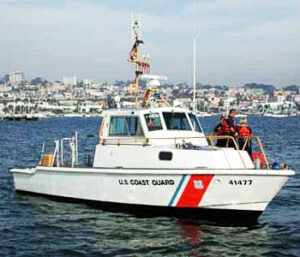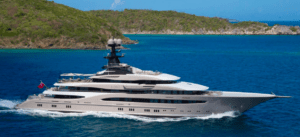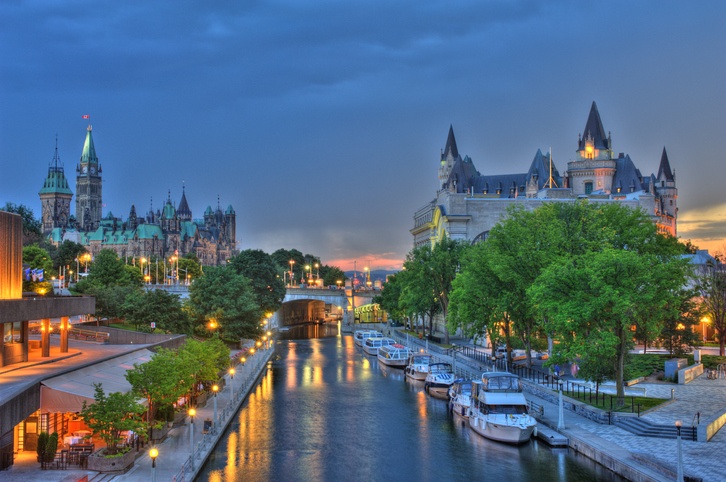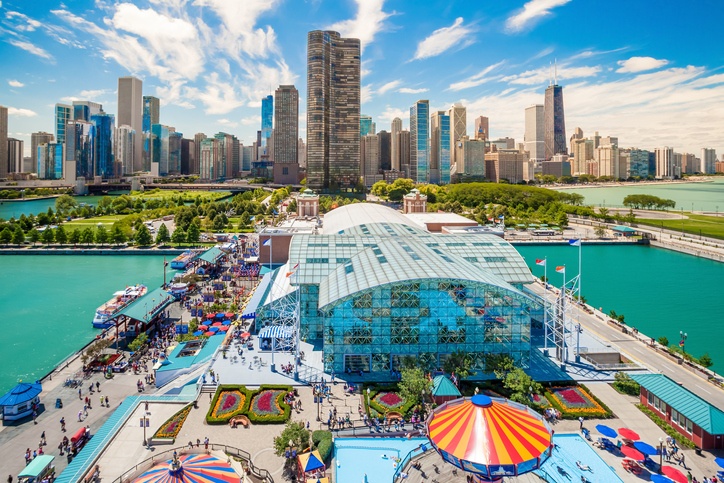Morehead City, NC – Fabulous Fishermen, and $5,858,875

Estimated reading time: 10 minutes – SBFL 25* – PLANNING TO VISIT – If you’re rushing down to Florida on the Atlantic Intracoastal Waterway (ICW), here’s another opportunity to slow down, with a visit to Morehead City, North Carolina. You are now in the region of North Carolina called the Crystal Coast.

After the Outer Banks (OBX), it is the next bi-coastal barrier island region of the state. As a matter of fact, a ferry connects Rout 12 of of OBX on Ocracoke to Cedar Island One side of it faces the mighty Atlantic Ocean. The other faces the Bogue Sound and the river basin of this set of barrier islands. The Bogue Sound is shallow, having sizable areas of shoaling. However, it is also seafood-rich and has excellent destinations to visit and enjoy yourself.
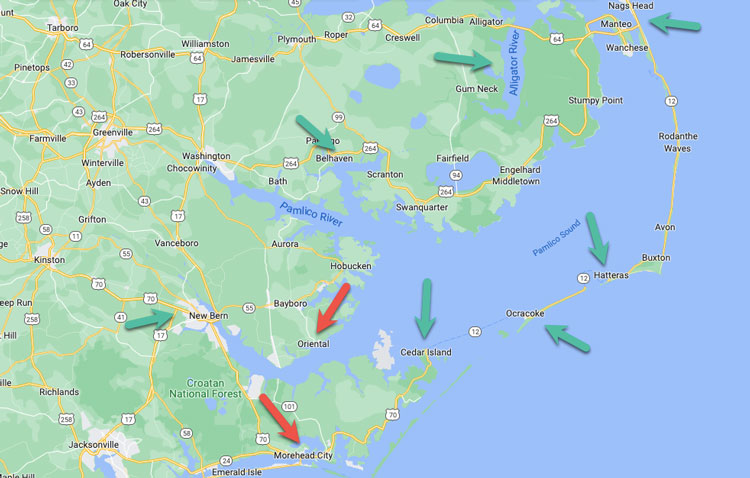
Going from north to south, during the planning of our very Slow Boat to Florida journey, we reach here after stopping over in the town of Oriental.
Morehead City is another popular stopover for ICW travelers. So, I recommend considering slowing down and spending a few days in Morehead City. We certainly plan to do it.
Our primary source of inspiration, Dorothea and Stuart E. Jones, in their 1958 National Geographic article titled, “Slow Boat to Florida,” stopped and visited the area. Now in the 21st century, we have our version of Slow Boat to Florida (SBFL). As our avid readers know, our series represents part travel, part current and historical highlights of selected locations and changing coastal life on the ICW. We’re comparing then and now, based on observations made by the Jones more than half a century ago. In this case, they stopped over in Morehead City. (Number 5 location on the map above.)
Our second inspiration source is a 1973 book published by National Geographic, titled, America’s Inland Waterway (ICW), by Allan C. Fisher, Jr. Apparently, he preferred to go to the next town over, Beaufort, in the same area. Well, we will also be visiting there, of course.
Humble beginnings of a 19th century port city
European settlement in the area started during the early 1700s. Today, when you’re in Morehead City’s downtown area, you are looking at a planned community of the mid-1800’s. Envisioning an important port city, John Motley Morehead, the twenty-ninth Governor of North Carolina, and others carefully planned Morehead City. So, you will notice that streets in the downtown area running north and south are numbered streets. Those running east to west are named for the developers and first leaders of Morehead City.
Morehead City grew because of its port, Pier 1, which was built at Shepard Point. It was the spot where the Newport River was eighteen to twenty feet deep and had a mile-wide channel. Developers considered this location more advantageous than the Beaufort and Carolina City’s channels, with depths of only twelve feet. Along the way, due to the newly-built railroad, people and goods poured in. At the same time, the city’s recreational value also helped. The shoreline and bountiful fishing have always attracted visitors and new residents to Morehead City. It became a popular, well-known vacation spot on the Atlantic coast.
Freshest of all fresh local seafood
I love festivals, full stop, but when it comes to food festivals, they are on top of my list. So here are two questions for you. Do you like a seafood festival, and are you on the ICW in or around North Carolina this fall season? If so, make sure to stop at Morehead City this year and enjoy the North Carolina Seafood Festival between September 30 and October 2.

Know what and when to ask
North Carolina harvests some of the finest fish and shellfish available anywhere in the world. Freshness from North Carolina waters is a treasure to be shared. Here is a secret that I would like to share with you. In order to benefit from this bounty of nature and find the freshest seafood around, you need to know what’s in season and look for it.
North Carolina harvests some of the finest fish and shellfish available anywhere in the world. Freshness from North Carolina waters is a treasure to be shared. Here is a secret that I would like to share with you. In order to benefit from this bounty of nature and find the freshest seafood around, you need to know what’s in season and look for it.
How? Chart #2 shows you what’s available in the southern part of North Carolina, which Moorehead is a part of. If you’re in the northern part of the state, such as the Outer Banks or, for that matter, the Inner Banks, Chart #1 will give you an idea of what’s in season. If you don’t want to study the charts, then refer to my recommendations below or simply attend Morehead City’s Seafood Festival.
The Big Rock
This year, at the 64th Annual Big Rock Blue Marlin Tournament in Morehead City, 266 boats competed for a record-breaking purse of $5,858,875. Mercenaria claimed the top prize of $3,489,813, an industry record, for the 572.6 lb fish caught on Day 1 of the tournament.
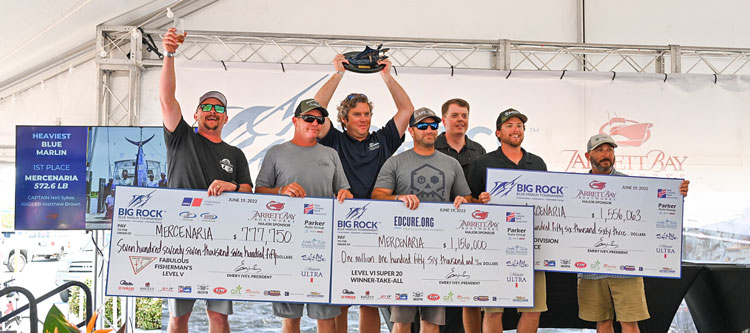
Now let’s crank up our time machine and land in Morehead City just before 1957, one year before the Jones’ of National Geographic stopped in Morehead City.
Commercial fishermen in those days seldom ventured beyond sight of the coastline. Their families had worked these coastal waters for generations, yet no one had ever seen a billfish. The term billfish refers to a group of predatory saltwater fish characterized by prominent pointed bills and by their large size, including blue marlin. Sailors who worked the commercial freighters that traveled in and out of the Morehead City port insisted they’d seen blue marlin not too far offshore. Locals that lived and fished there for many generations referred to that as “bar talk.” That’s because blue marlin skeletons were never washed up on the beaches. The deck hands didn’t know where they were at the time of the sighting. However, of course, the reports and rumors continued.
In the summer of 1957, five residents of the town decided to settle the issue once and for all. Together they created the Fabulous Fishermen Club — a loose-knit organization of Morehead City fishing enthusiasts. The Club partnered with several local merchants to announce they would pay a cash prize to the first person who could catch a blue marlin in the waters just off the Crystal Coast.
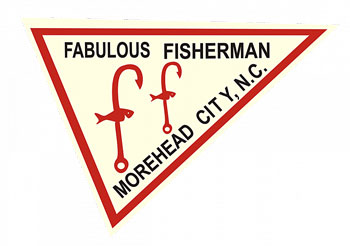
That cash prize did the trick. It kickstarted deep-sea fishing and gave a boost to the fledgling charter boat industry. Finally, summer failures of deep-sea fishing gave way to an autumn success.

On September 14, 1957, Raleigh angler Jimmy Croy, fishing aboard the Mary Z with Capt. K.W. “Bill’’ Olsen, landed a 143-pound blue marlin. This special catch forever changed the face of Crystal Coast fishing and Morehead City.
So consider doing deep-sea fishing while you are in Morehead City. I am sure that it will be an exhilarating experience of a lifetime.
Beaufort, a great neighboring town to visit
Having its own rich history, Beaufort’s beginning goes to the late 1600s. The Plan of Beaufort Towne was laid out in 1713, and today survives in a 12-block area which is on the National Register of Historic Places. (See location number 6 on the Crystal Coast Areas map above.)
It was a town visited by privateers, merchants, and skilled craftsmen—and where pirates sometimes sailed in to plunder or hide. Back in 1958, Beaufort had a thriving business as a center of menhaden fishing, but their catch was processed in Morehead City.
Beaufort was originally a fishing village and port of safety. The early economy of the town was based on the use of the natural resources in the area. Fishing, whaling, the production of lumber and naval stores, shipbuilding, and farming were the chief economic activities. Today, Beaufort’s economy depends heavily on tourism.
Fort Macon State Park
If you wonder what else is there, along with fish, fishing, and facilities that support our boats and boating needs in Morehead City, start with Fort Macon State Park. It’s located across the bridge in Atlantic Beach. (See location number 4 on the Crystal Coast Areas map above.)
The Jones’ wrote, “Striking out to the east between high dunes, we approached Fort Macon State Park and soon saw the earthworks of the old fort itself rising above the trees. This military relic, including moat, draw bridges, dungeons, and gun emplacements, is the third fort to stand on the site. The first, intended to fight off Spanish marauders, was never completed. The second, Fort Hampton, served in the War of 1812 and was destroyed by a hurricane soon after. The present five-sided fort was named in honor of United States Senator Nathaniel Macon. In 1861, it was seized by Confederate forces, only to be captured by the Yankees a year later.”
Cape Lookout National Seashore
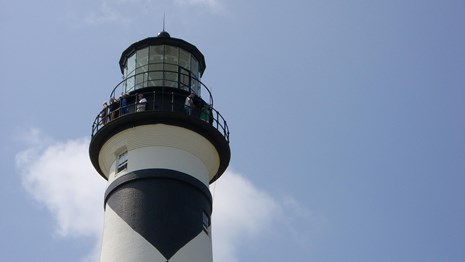
This undeveloped National Seashore island is a perfect spot for camping at the beach. (See location number 9 on the Crystal Coast Areas map above.) Think about it, pitching a tent overnight on the beach. You can experience the sea in a totally different way, enjoy the fantastic sunset. Perhaps for the first time in your life you may observe truly dark skies, away from the modern-day lights reflecting from cities and towns. A type of dark sky where you may be able to capture the glimpse of our Milky Way galaxy. Cape Lookout National Seashore is certified as an International Dark Sky Park. During the day you can look for wild Shackleford Horses. More on the history of the island is here.
Referring to Cape Lookout and the ships that have sunk out near the shores of Cape Lookout, the Jones’ wrote, “Wrecks lure treasure hunters… Off Cape Lookout lie some two dozen foundered ships, schooners, tankers, and freighters. Some were sunk by German torpedoes in World War II. Six marked “unidentified” on the charts tempt the imagination with dreams of pirate gold.”
Cedar Island
Our number 10 spot on the Crystal Coast Areas map above is Cedar Island. Cedar Island is home to the Ocracoke ferry. You can take the ferry to Cape Hatteras National Seashore. Reflecting on their experiences back in 1958, the Jones’ wrote, “A weekly truck from a Beaufort factory calls at island homes to deliver cotton twine and to collect basketball, volleyball, and fishing nets woven by the women on a piecework basis.” I am not sure if such a home cottage business is still there, but when we visit the town, we’ll certainly look into it and share our experiences then.
Well, that’s it for now. Stay well. I hope to say hello to you if you spot my boat, Life’s AOK, in one of the locations that I’m hoping to visit in 2022, that is, if whatever the latest version of Coronavirus permits us.
I bid you Fair Winds and Following Seas.
Cover photo: Aerial photo of Morehead City, North Carolina
A few things I learned
- As I mentioned above, here’s a secret that I would like to share with you. In order to benefit from local fishermen’s catch and find the freshest seafood in Morehead City or anywhere in North Carolina, you need to know what’s in season, ask and look for it.

Chart #2 shows you what’s available in the southern part of North Carolina, which Moorehead is a part of. If you’re in the northern part of the state, such as the Outer Banks or, for that matter, the Inner Banks, Chart #1 will give you an idea of what’s in season. If you don’t want to study the charts, then refer to my recommendations below or simply attend Morehead City’s North Carolina Seafood Festival between September 30 and October 2,
You can also search for From Dock to Dish program members that are in many cities in North Carolina.
2 things I recommend
- Fresh, straight-off-the-boats fish and shellfish that are harvested by local fishermen are sold in these seafood markets:
Captain Jim’s (will ship)
4665 Arendell St., Morehead City
(252)726-3454
Blue Ocean Market Fresh Seafood
2400 Bridges St., Morehead City
252.726.4886
- Enjoy the best ‘certified local’ fresh seafood Morehead City can offer at these restaurants:
How easy?
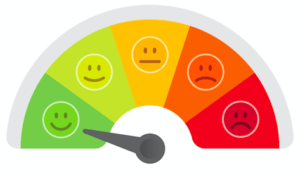
*SBFL stands for Slow Boat to Florida. It is a series of my blog posts, which started with a posting that had the same title. Each numbered heading has two parts. The first is “Planned or Planning to visit,” and when we visit the planned location, a “Visited” label appears at the beginning, next to SBFL.
The essence of this series is not to seek new lands and exotic cultures. Rather, it is to cover our journey of discovery (hence the title of our blog Trips Of Discovery) that has to do with seeing with a new eye the coastal locations of the Atlantic Intracoastal Waterway (ICW) where present-day America started to flourish.
The SBFL series represents part travel, part current, and historical anthropological highlights of selected locations and coastal life. We’re comparing then and now, based on observations made by Dorothea and Stuart E. Jones in their 1958 National Geographic article titled, “Slow Boat to Florida” and a 1973 book published by National Geographic, titled America’s Inland Waterway (ICW) by Allan C. Fisher, Jr. We also take a brief look at the history of the locations that I am writing about. Finally, we bundle it up with our observations during our actual visits to the locations and our interviews with local residents. Think of it as a modest time capsule of past and present.
My wife and I hope that you, too, can visit the locations that we cover, whether with your boat or by car. However, if that is not in your bucket list to do, enjoy reading our plans and actual visits as armchair travelers anyway. Also, we would love to hear from you on any current or past insights about the locations that I am visiting. Drop me a note, will you?


